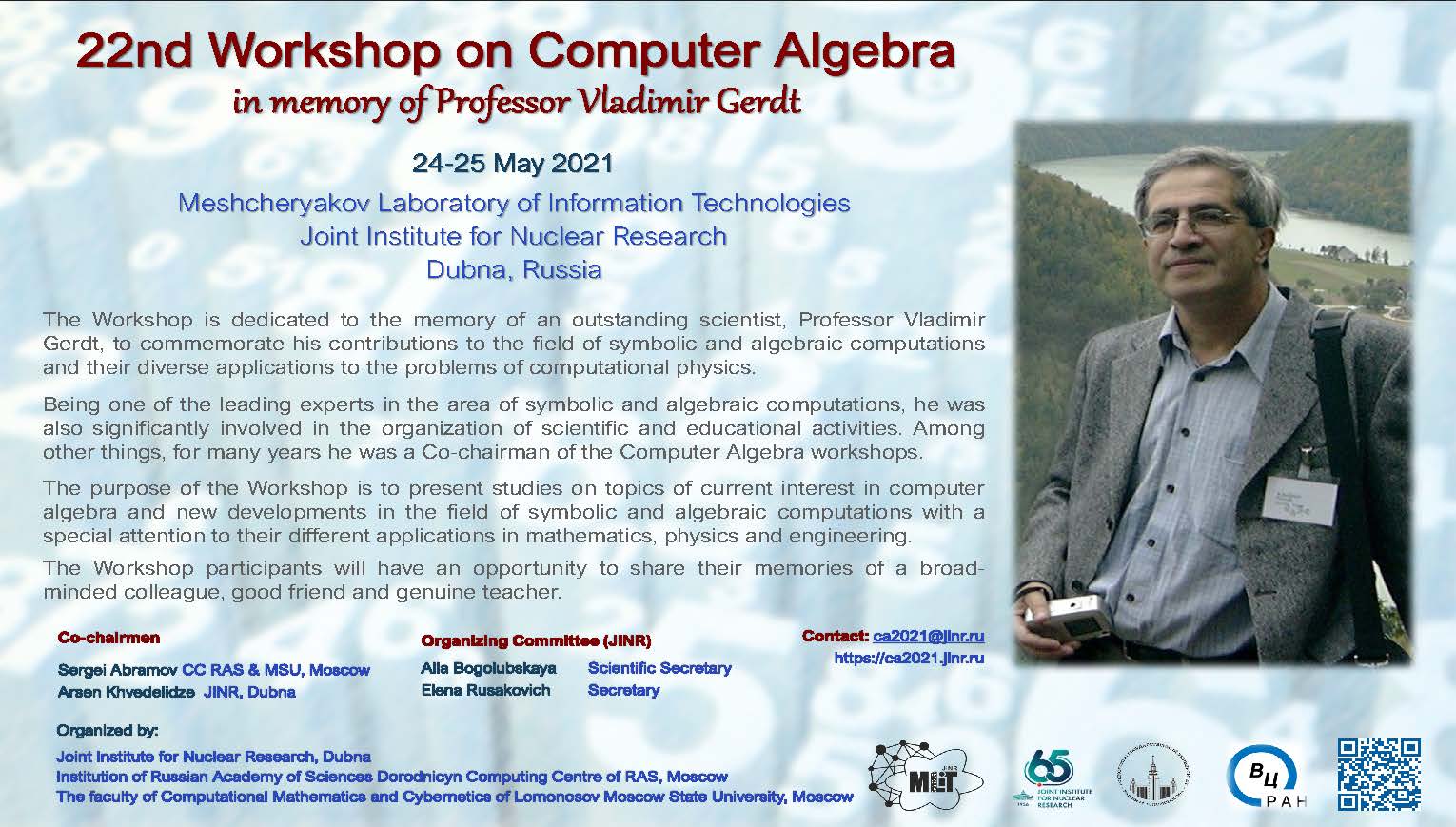- Details
"Application of neutron activation analysis and other methods in materials science"
Aleksiayenak Y.V.
The report will present the results of work carried out jointly with the Scientific-Practical Materials Research Centre of the National Academy of Sciences of Belarus (SSPA "Scientific-Practical Materials Research Centre"), Minsk, Belarus. Currently, the fields of application of composite materials (composites) are very wide, ranging from mechanical engineering to electronics. Composites based on copper disulfide, which serves as the basis for solar energy converters; composites based on cubic boron nitride, Ti, and Al, which can be used in high-energy and high-temperature electronics, solid-state dosimetry, have been investigated. The obtained composites were analyzed by X-ray diffraction and scanning electron microscopy. Neutron activation analysis was used to determine impurities in composite materials synthesized at the Scientific-Practical Materials Research Centre, to determine the optimal conditions for synthesis, and to identify sources of impurities, for that purpose the elemental composition of the synthesis equipment and burden materials was studied.
- Details
"ACCELERATOR LUE-200. YESTERDAY TODAY TOMORROW"
A.P. SUMBAEV (Veksler and Baldin Laboratory of High Energy Physics JINR)
The linear electron accelerator LUE_200 was designed and created as a driver for a booster-type neutron source with an integral neutron yield of ᷉ 1014 sec-1, which determines the energy and power of the accelerated particle beam. The accelerator was put into operation in stages. 2009 - 2010 the physical start-up of the IREN facility was carried out as part of the first stage of the accelerator (one accelerating section, one klystron, one modulator). The first stage of the accelerator worked several thousand hours for the experiment at a cycle frequency of 10 - 25 Hz with a beam current of 1.5 - 2.0 A, duration ᷉ 100 nsec and an energy of 30 - 35 MeV (spectrum maximum). In 2016, the second accelerating section was installed and launched (+ 2nd klystron with modulator). As a result of the launch of the second stage of the accelerator (2016-2019), an increase in the energy of accelerated electrons to 70 MeV, and the average power of the electron beam to 0.6 kW was achieved. The problems of achieving design parameters and the possibility of developing an accelerator are considered. The plans for the development of the accelerator provide for an increase in the cyclicity of the accelerator up to 100-120 Hz, and the beam power up to 1.5 kW, which will make it possible to obtain up to 3 ∙ 1012 sec-1 neutrons on a non-multiplying W target.
The theses submitted for defense and the results included in the thesis for the degree of Doctor of Technical Sciences are presented for discussion.
- Details
The Workshop will be held on May 24 – 25, 2021 in Dubna.
The workshop will be held online, but mixed on/offline sessions are planned to be organized at the JINR Laboratory of Information Technologies.
Workshop website: https://ca2021.jinr.ru

- Details
"Application of mass multielement prompt gamma activation analysis to determine the elemental composition of archaeological and other samples"
S.B. Borzakov, A.Zh. Zhomartova, A.Yu. Dmitriev
The method of prompt gamma activation analysis (PGAA) was used for the first time in Russia, at FLNP JINR to study archaeological ceramics.
PGAA is a completely non-destructive analytical method for qualitative and quantitative determination with different sensitivity of several tens of elements in samples of about 100 mg to several grams or more. The method is suitable for studying homogeneous large size samples, can be used for the analysis of samples with matrices of light elements that are poorly detected by other methods.
The pulsed reactor IBR-2 is used as a neutron source. The channel is equipped with a curved neutron guide. Gamma rays are recorded by a radiation-resistant HPGe Canberra detector with the 2.3 keV resolution for the 60Co gamma line with the energy of 1332.5 keV and 70% relative efficiency. The detector is calibrated in energy and efficiency in the energy range from 50 keV to 8 MeV. The thermal neutron flux density is approximately 6·105 n·cm-2·s-1.
The obtained spectra are processed using the Genie-2000 program, for which a special library of prompt gamma lines has been done. Calculations of mass fractions are automated, for which a special software and a library of nuclear constants have been created.
Fragments of ceramic vessels of the 15th-16th centuries made of red clay, discovered during excavations in the Moscow Kremlin and in Bolgar, and archaeological gold-silver alloy (presumably electrum), and a rare astrophysical object, the Chelyabinsk meteorite, were investigated. The results were compared with the data of other methods - neutron activation and X-ray fluorescence analysis and showed good agreement - within 2-3 standard deviations. The data obtained were used by scientists from the Institute of Archeology of Russian Academy of Sciences to solve topical problems in the field of archeology.
- Details
Meeting agenda:
1.Dissertation proposal defense submitted to the degree of Doctor of Technical Sciences in the specialty 01.04.01 (1.3.2) - "Devices and methods of experimental physics."
Subject of dissertation: “Experimental methods of neutron radiography and tomography at the IBR-2 high flux pulsed reactor and the WWR-K stationary research nuclear reactor”.
Speaker: S.Kichanov
2. Proposal to open a new project "Emissions of neutrons and gamma quanta in reactions induced by neutrons (EGRIN)" within the framework of Theme 1128.
Speaker: Sh. Zeynalov


